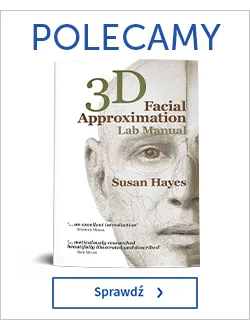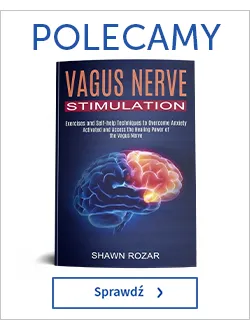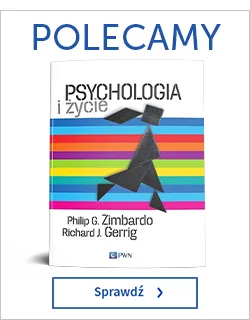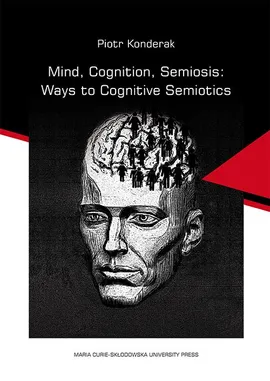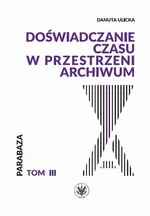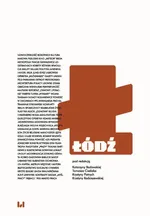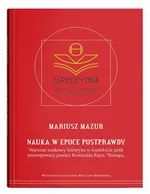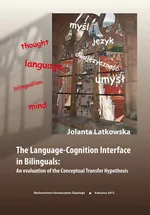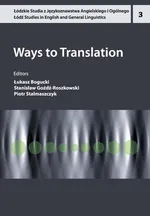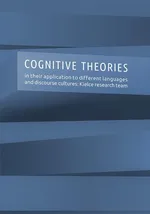- Kategorie:
- ISBN: 978-83-227-9085-4
- ISBN druku: 978-83-227-9085-4
- Liczba stron: 320
-
Sposób dostarczenia produktu elektronicznegoProdukty elektroniczne takie jak Ebooki czy Audiobooki są udostępniane online po uprzednim opłaceniu (PayU, BLIK) na stronie Twoje konto > Biblioteka.Pliki można pobrać zazwyczaj w ciągu kilku-kilkunastu minut po uzyskaniu poprawnej autoryzacji płatności, choć w przypadku niektórych publikacji elektronicznych czas oczekiwania może być nieco dłuższy.Sprzedaż terytorialna towarów elektronicznych jest regulowana wyłącznie ograniczeniami terytorialnymi licencji konkretnych produktów.
-
Ważne informacje techniczne
-
Minimalne wymagania sprzętowe:
- procesor: architektura x86 1GHz lub odpowiedniki w pozostałych architekturach
- Pamięć operacyjna: 512MB
- Monitor i karta graficzna: zgodny ze standardem XGA, minimalna rozdzielczość 1024x768 16bit
- Dysk twardy: dowolny obsługujący system operacyjny z minimalnie 100MB wolnego miejsca
- Mysz lub inny manipulator + klawiatura
- Karta sieciowa/modem: umożliwiająca dostęp do sieci Internet z prędkością 512kb/s
-
Minimalne wymagania oprogramowania:
- System Operacyjny: System MS Windows 95 i wyżej, Linux z X.ORG, MacOS 9 lub wyżej, najnowsze systemy mobilne: Android, iPhone, SymbianOS, Windows Mobile
- Przeglądarka internetowa: Internet Explorer 7 lub wyżej, Opera 9 i wyżej, FireFox 2 i wyżej, Chrome 1.0 i wyżej, Safari 5
- Przeglądarka z obsługą ciasteczek i włączoną obsługą JavaScript
- Zalecany plugin Flash Player w wersji 10.0 lub wyżej.
-
Informacja o formatach plików:
- PDF - format polecany do czytania na laptopach oraz komputerach stacjonarnych.
- EPUB - format pliku, który umożliwia czytanie książek elektronicznych na urządzeniach z mniejszymi ekranami (np. e-czytnik lub smartfon), dając możliwość dopasowania tekstu do wielkości urządzenia i preferencji użytkownika.
- MOBI - format zapisu firmy Mobipocket, który można pobrać na dowolne urządzenie elektroniczne (np.e-czytnik Kindle) z zainstalowanym programem (np. MobiPocket Reader) pozwalającym czytać pliki MOBI.
- Audiobooki w formacie MP3 - format pliku, przeznaczony do odsłuchu nagrań audio.
-
Rodzaje zabezpieczeń plików:
- Watermark - (znak wodny) to zaszyfrowana informacja o użytkowniku, który zakupił produkt. Dzięki temu łatwo jest zidentyfikować użytkownika, który rozpowszechnił produkt w sposób niezgodny z prawem.
- Brak zabezpieczenia - część oferowanych w naszym sklepie plików nie posiada zabezpieczeń. Zazwyczaj tego typu pliki można pobierać ograniczoną ilość razy, określaną przez dostawcę publikacji elektronicznych. W przypadku zbyt dużej ilości pobrań plików na stronie WWW pojawia się stosowny komunikat.
Mind, Cognition, Semiosis: Ways to Cognitive Semiotics
(eBook)-
Druk: Lublin, 2018
-
Wydanie/Copyright: wyd. 1
-
Autor: Piotr Konderak
-
Wydawca: UMCS
-
Formaty:
PDF (Watermark)WatermarkZnak wodny czyli Watermark to zaszyfrowana informacja o użytkowniku, który zakupił produkt. Dzięki temu łatwo jest zidentyfikować użytkownika, który rozpowszechnił produkt w sposób niezgodny z prawem. Ten rodzaj zabezpieczenia jest zdecydowanie najbardziej przyjazny dla użytkownika, ponieważ aby otworzyć książkę zabezpieczoną Watermarkiem nie jest potrzebne konto Adobe ID oraz autoryzacja urządzenia.
Mind, Cognition, Semiosis: Ways to Cognitive Semiotics
What is meaning-making? How do new domains of meanings emerge in the course of child’s development? What is the role of consciousness in this process? What is the difference between making sense of pointing, pantomime and language utterances? Are great apes capable of meaning-making? What about dogs? Parrots? Can we, in any way, relate their functioning and behavior to a child’s? Are artificial systems capable of meaning-making?
The above questions motivated the emergence of cognitive semiotics as a discipline devoted to theoretical and empirical studies of meaning-making processes. As a transdisciplinary approach to meaning and meaning-making, cognitive semiotics necessarily draws on a different disciplines: starting with philosophy of mind, via semiotics and linguistics, cognitive science(s), neuroanthropology, developmental and evolutionary psychology, comparative studies, and ending with robotics.
The book presents extensively this discipline. It is a very eclectic story: highly abstract problems of philosophy of mind are discussed and, simultaneously, results of very specific experiments on picture re
cognition are presented. On the one hand, intentional acts involved in semiotic activity are elaborated; on the other, a computational system capable of a limited interpretation of excerpts from Carroll’s Through the Looking-Glass is described. Specifically, the two roads to cognitive semiotics are explored in the book: phenomenological-enactive path developed by the so-called Lund school and author’s own proposal: a functional-cognitivist path.
Introduction: How to Approach Meaning? 9 Acknowledgements 17 Part I. Cognitive Semiotics: The Basics 19 Chapter 1. Introducing Cognitive Semiotics 21 1.1 The beginnings 21 1.2 Extension of the term “semiotics” 24 1.3 Methodology of cognitive semiotics 26 1.4 Transdisciplinarity 29 1.5 Phenomenological contributions 30 1.6 “Third stage” of cognitive science 31 1.7 Key research interests 32 1.7.1 Metatheoretical considerations 32 1.7.2 Semiotic development and evolution 33 1.7.3 Multimodality and gestures 37 1.8 Cognitive semiotics and cognitivism 38 Chapter 2. The Semiotic Hierarchy Framework 41 2.1 Meaning theory – initial remarks 41 2.2 The Semiotic Hierarchy as a theory of meaning 43 2.2.1 Level 1: Life 43 2.2.2 Level 2: Consciousness 45 2.2.3 Between life and consciousness: the first transition 46 2.2.4 Level 3: Signs 48 2.2.5 Between consciousness and signs: the second transition 49 2.2.6 Level 4: Language 50 2.2.7 From signs to language: the third transition 52 2.3 The Semiotic Hierarchy: some objections 54 Part II. Minds and Meanings 61 Chapter 3. “Analytic” Philosophy of Mind 63 3.1 The Cartesian heritage 63 3.2 Meaningful behavior 66 3.2.1 Behaviorism and cognitive semiotics: mind, body, behavior 70 3.2.2 Problem of other minds 70 3.2.3 First-person knowledge 71 3.3 Reduction to the neural: meaning in the brain 72 3.3.1 Phenomenological fallacy and other problems 73 3.4 Meaning and function 75 3.4.1 On the way to functionalism: causal profiles 75 3.4.2 Mind and function 76 3.4.3 Qualia 79 3.4.4 The representational theory of mind 80 3.4.5 Functionalism extended 82 3.4.6 Functionalism and cognitive semiotics 84 3.4.7 Extended mind and meaning-making 86 3.5 Consciousness, functionally understood 87 3.6 The subjective mind 90 Chapter 4. The Phenomenological Mind and Meaning-Making 93 4.1 How should phenomenology be approached? 93 4.2 Intentionality 95 4.2.1 Perception 97 4.2.2 Remembering 101 4.2.3 Imagination and anticipation 103 4.2.4 Signitive intentions 103 4.2.5 Pictorial intention 105 4.2.6 Indicational intentions 106 4.2.7 Categorial intentions 107 4.2.8 Types of intentionality and the Semiotic Hierarchy 109 4.3 So where are meanings? 109 4.4 The phenomenological method 111 4.5 Lifeworld 115 4.6 Intersubjectivity 116 4.7 Embodiment 119 4.8 A way to science 120 4.9 Phenomenology applied 122 4.9.1 Neurophenomenology 122 4.9.2 Front-loading phenomenology 124 4.9.3 A note on heterophenomenology 126 4.10 Summary: taking phenomenology seriously 127 Part III. Cognition 133 Chapter 5. Cognitivist Approach to Cognition 135 5.1 “Cognitivism” or standard cognitive science 135 5.2 Symbolic approach: the three basic ideas 136 5.2.1 Limitations: magical number 7 137 5.2.2 The generative approach to language 138 5.2.3 TOTE: organization of behavior and behind behavior 140 5.2.4 Cognitivism in a nutshell: perception 141 5.3 Connectionist approaches 143 5.3.1 Overview of the architecture 144 5.3.2 Connectionist representations 145 5.3.3 Manipulations on representations 147 5.4 Representations revisited 148 5.5 What cognitive science is supposed not to be 149 5.6 Standard cognitive science and meaning-making 151 5.7 Cognitivism – summary 153 5.8 Departure from cognitivism: dynamical systems 154 5.8.1 Dynamical systems – applications 156 Chapter 6. Beyond Cognitivism? 159 6.1 Problems with cognitivism 159 6.2 The enactive approach: cognition as interaction 160 6.2.1 Meaning-making in perception I: Gibson’s ecological psychology 163 6.2.2 Meaning-making in perception II: “skillful bodily activity” 167 6.2.3 Experiences 169 6.2.4 Foundations of meaning: autonomy and sense-making 170 6.2.5 Consciousness and phenomenology 172 6.2.6 Radical enactivism: Hutto and Myin 173 6.2.7 Enactivism in cognitive semiotics 175 6.3 Embodied cognition 175 6.3.1 The two approaches to embodiment 178 6.3.2 Embodiment in practice 179 6.3.3 How to overcome the limitations? 181 6.3.4 Six faces of embodiment 183 6.3.5 Summarizing embodiment 184 6.4 Extended cognition 185 6.4.1 Constitution and the cognitive 186 6.4.2 What is a cognitive system? 187 6.5 The embedded mind: a short note 190 6.6 4e+a (or rather 2e+a) 191 6.7 Representations 196 6.7.1 Representations and cognitive semiotics 199 6.8 Summary: cognitive science, cognitive sciences 200 Part IV. Semiosis 207 Chapter 7. Towards a Semiotics for Cognitive Semiotics 209 7.1 Semiotics, sign, semiosis 209 7.2 What is a sign: The Stoics 210 7.2.1 Kinds of signs 210 7.2.2 Sign, proposition and conditional 211 7.2.3 Signs and language 212 7.2.4 “Reading the world”: semeia and cognitive semiotics 213 7.3 Peircean semiotics 214 7.3.1 Signs and cognition 215 7.3.2 Sign, the definition(s) 217 7.3.3 Peircean semiosis as meaning-making 221 7.3.4 The second trichotomy 222 7.3.5 Meanings beyond signs 225 7.3.6 Peircean cognitive semiotics 226 7.4 Semiotics for cognitive semiotics: Sonesson 227 7.4.1 Perceptual meaning 227 7.4.2 Sonesson’s notion of a sign 228 7.4.3 Phenomenology and semiotics 231 7.5 Semiotics and empirical studies 234 7.5.1 Emergence of sign function empirically addressed 235 7.5.2 Semiotics for cognitive semiotics: applications 237 7.5.2.1 Study I: understanding iconicity 238 7.5.2.2 Study II: the role of semiotic vehicles in communication 239 7.6 In sum: the conceptual-empirical spiral 241 Chapter 8. Cognitivism: Modeling Semiosis 243 8.1 Back to cognitivism: a method 243 8.1.1 Cognitive architectures 244 8.1.2 Cognitive modeling: an example application 246 8.1.3 Cognitive (computational) modeling 248 8.2 Cognitive modeling of semiosis 250 8.2.1 What is modeled: semiotic systems 251 8.2.2 Approaches to semiosis 253 8.2.3 Cognitive architecture for semiosis: GLAiR & snarpy 255 8.2.4 Semiosis implemented 257 8.2.5 Further observations 266 8.2.6 Re-interpretation 271 8.2.7 Using a sign as a sign 273 8.3 Summary: cognitive modeling of meaning-making 275 Concluding Remarks: Ways to Cognitive Semiotics Reconsidered 277 Common starting point 277 Complications on the road 279 The forking of paths 281 On the cognitivist path 281 Back on the common road? 283 What’s on the horizon 283 Cognitivism on the horizon 285 The last signpost on the road 286 References 287 Index of Names 309 Index of Subjects 313
-
Inne z kategorii
-
Inne wydawcy



